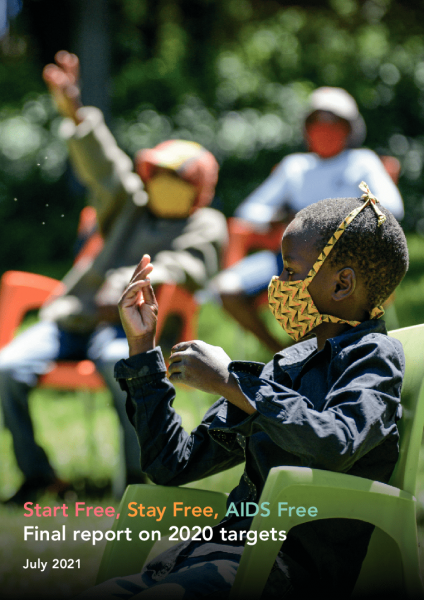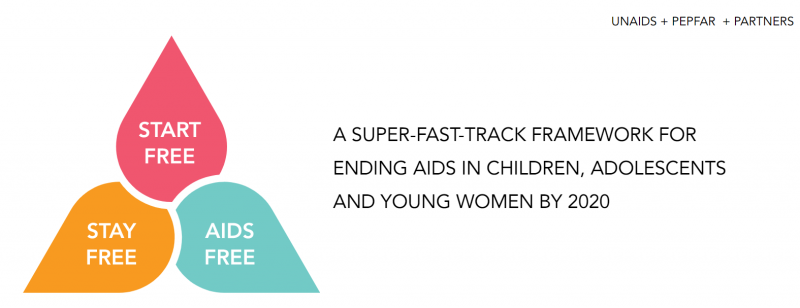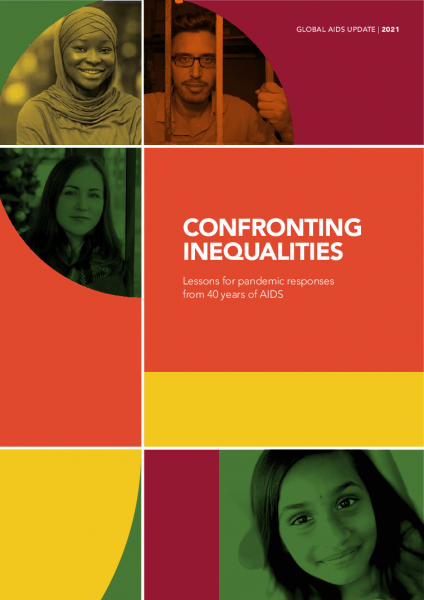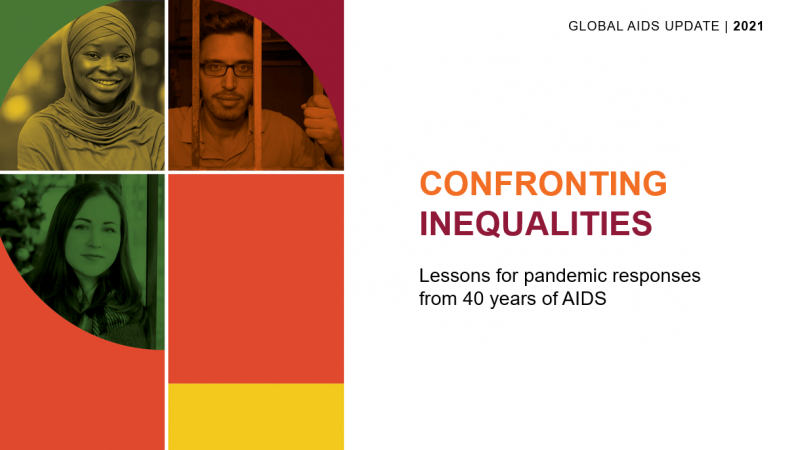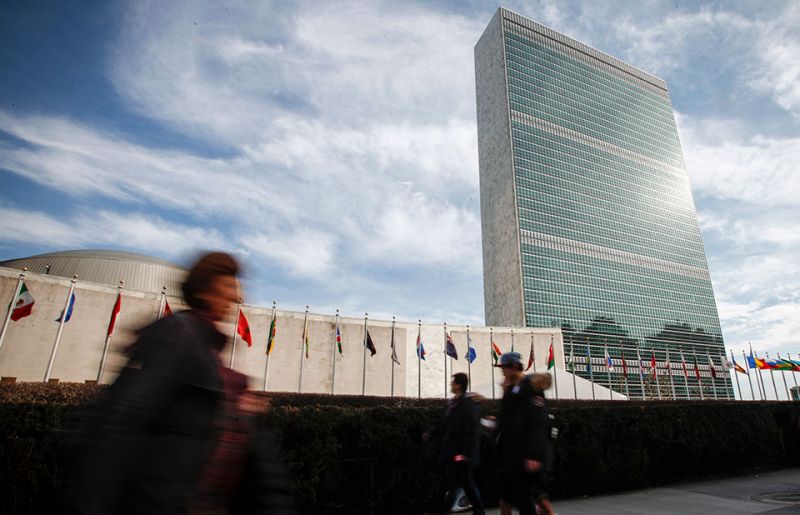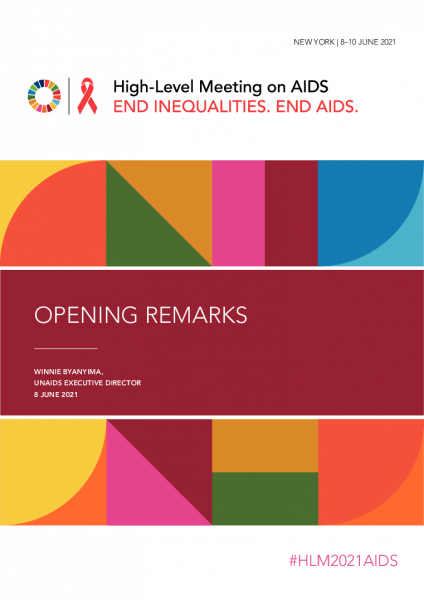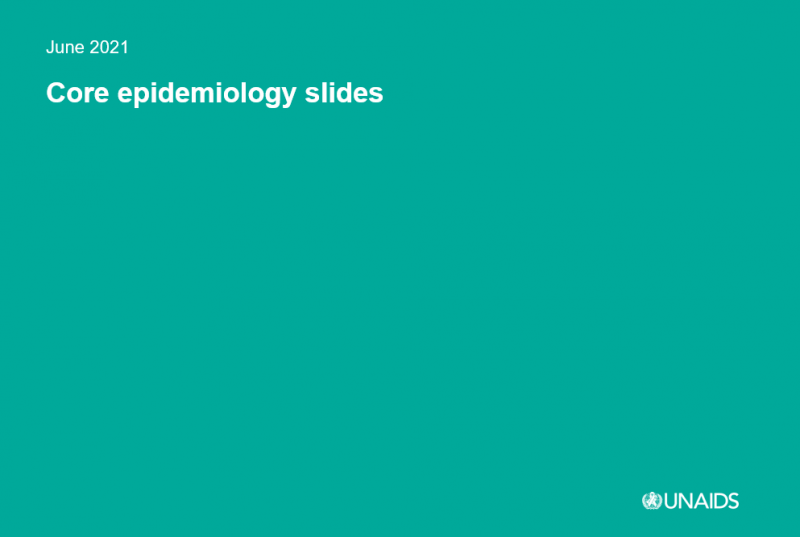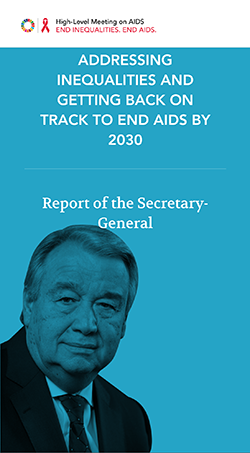Celebrities and supporters of the global HIV response take part in a new UNAIDS film and social media campaign calling on world leaders to address the inequalities driving the HIV epidemic to end AIDS by 2030
GENEVA/NEW YORK, 1 July 2021—In the 40th year since the first AIDS cases were reported, a group of celebrities and high-profile supporters of the HIV response have appeared in a new film as part of a campaign to hold world leaders to their commitment to end the AIDS epidemic by 2030. The film, A Message to World Leaders on Ending AIDS, shows how the HIV epidemic remains a global health emergency and that too many people are being left behind in the response because the underlying inequalities driving the epidemic are not being addressed.
Alongside the UNAIDS Executive Director, Winnie Byanyima, the film features celebrities and long-standing supporters of the global HIV movement, including Kenneth Cole, Toumani Diabaté, Youri Djorkaeff, David Furnish, Sir Elton John, Princess Stéphanie of Monaco, Sheryl Lee Ralph, Stéphanie Seydoux, Charlize Theron, Brigitte Touadera, Yousra and others.
People are invited to join the campaign by sending their own messages to world leaders on social media using the #EndInequalitiesEndAIDS hashtag and by signing a Dear World Leader letter that lays out the progress made against the HIV epidemic to date while urging stronger action to reduce inequalities, mobilize resources and empower communities living with and affected by HIV to end the AIDS epidemic for good. The letter also expresses concern about the impact of COVID-19 on HIV services and how the pandemic has increased vulnerability to HIV infection among certain groups of people, such as young women and girls because of interruptions to schooling, child marriage and gender-based violence.
The campaign reflects the recently adopted UNAIDS Global AIDS Strategy 2021–2026: End Inequalities, End AIDS and supports the outcomes of the 2021 United Nations High-Level Meeting on AIDS. At the meeting, Member States supported the 2021 Political Declaration on HIV and AIDS: Ending Inequalities and Getting on Track to End AIDS by 2030, which set new targets for HIV prevention and treatment and the reduction of HIV-related stigma and discrimination. If those targets are met by 2025, the world will be on course to end AIDS as a public health threat by 2030 as part of the Sustainable Development Goals. If reached, the targets will deliver HIV services to 95% of all people who need them, reduce the number of new HIV infections annually to fewer than 370 000 and reduce AIDS-related deaths to fewer than 250 000.
Incredible progress has been made against HIV over the past four decades, with the number of people on life-saving medicines more than tripling since 2010. But the campaign draws attention to those being left behind, such as young women and girls, gay men and other men who have sex with men, sex workers, transgender people and people who use drugs. A recently released UNAIDS report, Global commitments, local action, shows that 10.2 million of 37.6 million people living with HIV globally are still waiting for treatment. Last year alone, 690 000 people died of AIDS-related illnesses and there were 1.5 million new HIV infections worldwide.
The film was launched during the 48th meeting of the UNAIDS Programme Coordinating Board. It can be found, with the letter to world leaders, at endinequalitiesendaids.unaids.org.
QUOTES:
“We need governments to do their part, we need communities to mobilize and organize, we need civil society to advocate … Those who understand the need for global solidarity, those whose hearts tell them that the right thing to do is to care for humanity, must organize and win the public debate.”
Winnie Byanyima, UNAIDS Executive Director and Under-Secretary-General of the United Nations
“The stigma associated [with AIDS] was arguably worse than the disease itself … If we work together toward these common goals [on HIV prevention and treatment] and if they are achieved by 2025 it will put the world back on track to end AIDS as a public health crisis by 2030.”
Kenneth Cole, designer, activist and UNAIDS International Goodwill Ambassador
“It’s important that we continue this fight and redouble our efforts. It is urgent.”
Toumani Diabaté, musician and UNAIDS International Goodwill Ambassador
“The virus has not gone away. Access to prevention, treatment and care remains a vital priority.”
Youri Djorkaeff, Chief Executive Officer, FIFA Foundation
“People who feel disenfranchised and cut off from society … that’s where HIV tends to come in and root down most. [We need] to ensure that everybody who’s at risk of contracting HIV feels safe, feels loved and feels they have access to the testing and treatment that they need.”
David Furnish, Chairman, the Elton John AIDS Foundation
“Young children from Indonesia were expelled from their schools when teachers and parents found out that they are HIV-positive.”
Atiqah Hasiholan, actress, model and UNAIDS Goodwill Ambassador for Indonesia
“We’ve made a lot of progress scientifically and medically, but we still have a long way to go. [Ending AIDS] is an achievable dream but what we have to do is end the stigma. We must continue to give people hope throughout the world that AIDS is on the agenda. We can’t leave these people behind. We are all born equal, we all should be treated the same.”
Sir Elton John, musician and founder of the Elton John AIDS Foundation
“Today, people living with HIV can enjoy long, healthy lives with one pill a day. We need a recommitment to ending the ignorance, the stigma and, yes, sometimes the silence that stands between us and the end of the AIDS epidemic.”
Sheryl Lee Ralph, actress, singer, author and activist
“We know how to end AIDS and we have the tools to do so.”
Stéphanie Seydoux, France’s Ambassador for Global Health
“We can encourage our leaders to provide the means to stop this pandemic.”
Princess Stéphanie of Monaco, UNAIDS International Goodwill Ambassador
“There’s one simple reason we’re missing our goal: inequality. Key populations most likely to become HIV-positive are least likely to have access to the services they need to survive. Whether you live or die from AIDS is still too often determined by who you are, who you love and where you live.”
Charlize Theron, actress, founder of the Charlize Theron Africa Outreach Project and United Nations Messenger of Peace
“Unfortunately, complacency is setting in and inequalities are growing. I call on leaders around the world to commit to a world without AIDS.”
Brigitte Touadera, First Lady of the Central African Republic
“Many people are not accessing services out of fear of being recognized or judged or out of personal safety and security.”
Pia Wurtzbach, Miss Universe 2015 and UNAIDS Goodwill Ambassador for Asia and the Pacific
“To end AIDS, we need to talk about it. HIV does not discriminate. We do.”
Yousra, actress, singer and UNAIDS Goodwill Ambassador for the Middle East and North Africa
UNAIDS
The Joint United Nations Programme on HIV/AIDS (UNAIDS) leads and inspires the world to achieve its shared vision of zero new HIV infections, zero discrimination and zero AIDS-related deaths. UNAIDS unites the efforts of 11 UN organizations—UNHCR, UNICEF, WFP, UNDP, UNFPA, UNODC, UN Women, ILO, UNESCO, WHO and the World Bank—and works closely with global and national partners towards ending the AIDS epidemic by 2030 as part of the Sustainable Development Goals. Learn more at unaids.org and connect with us on Facebook, Twitter, Instagram and YouTube.



